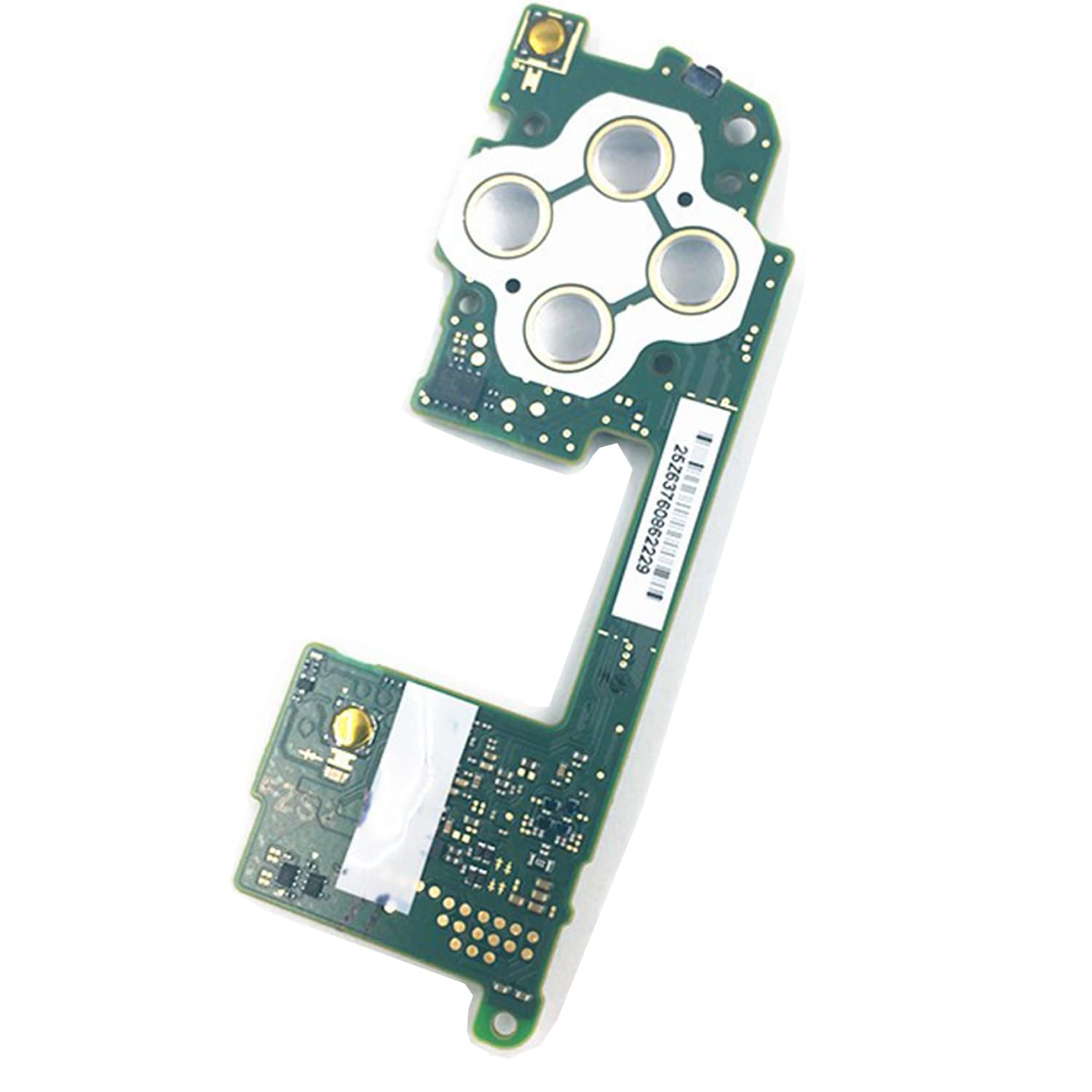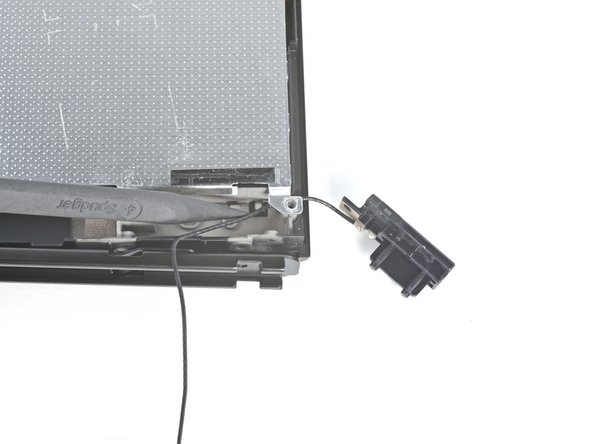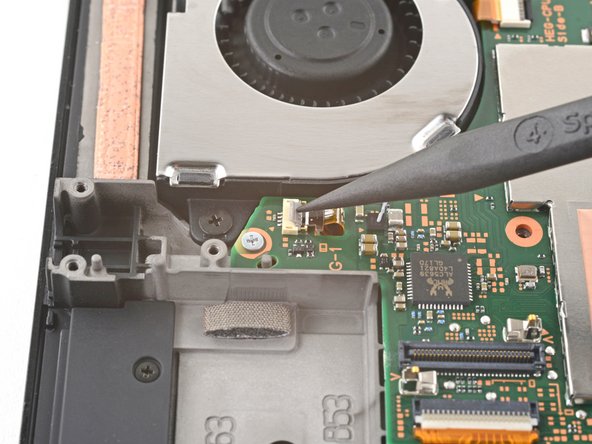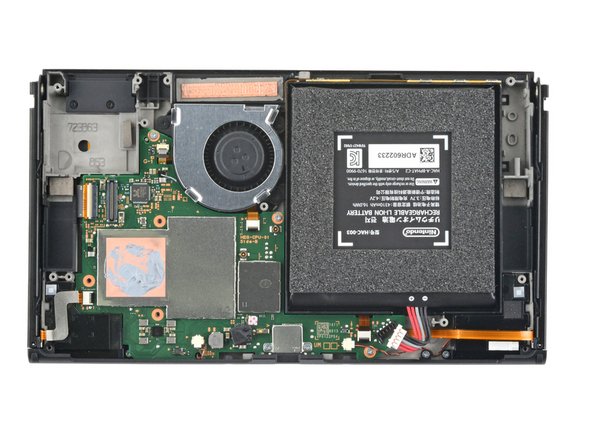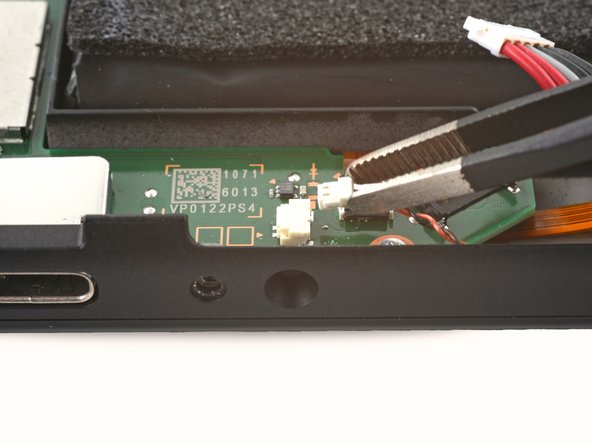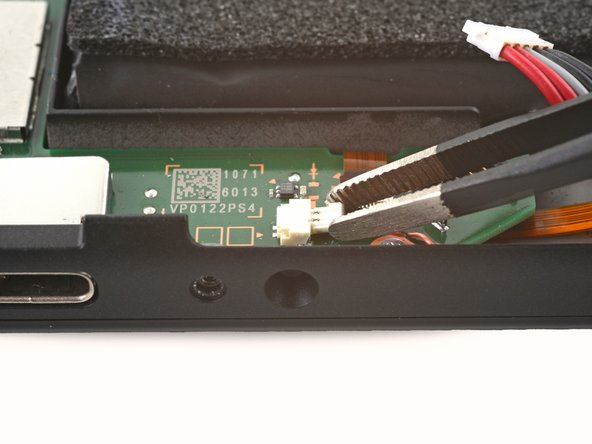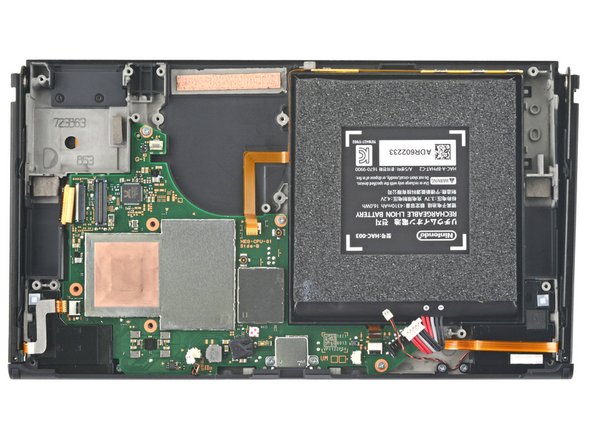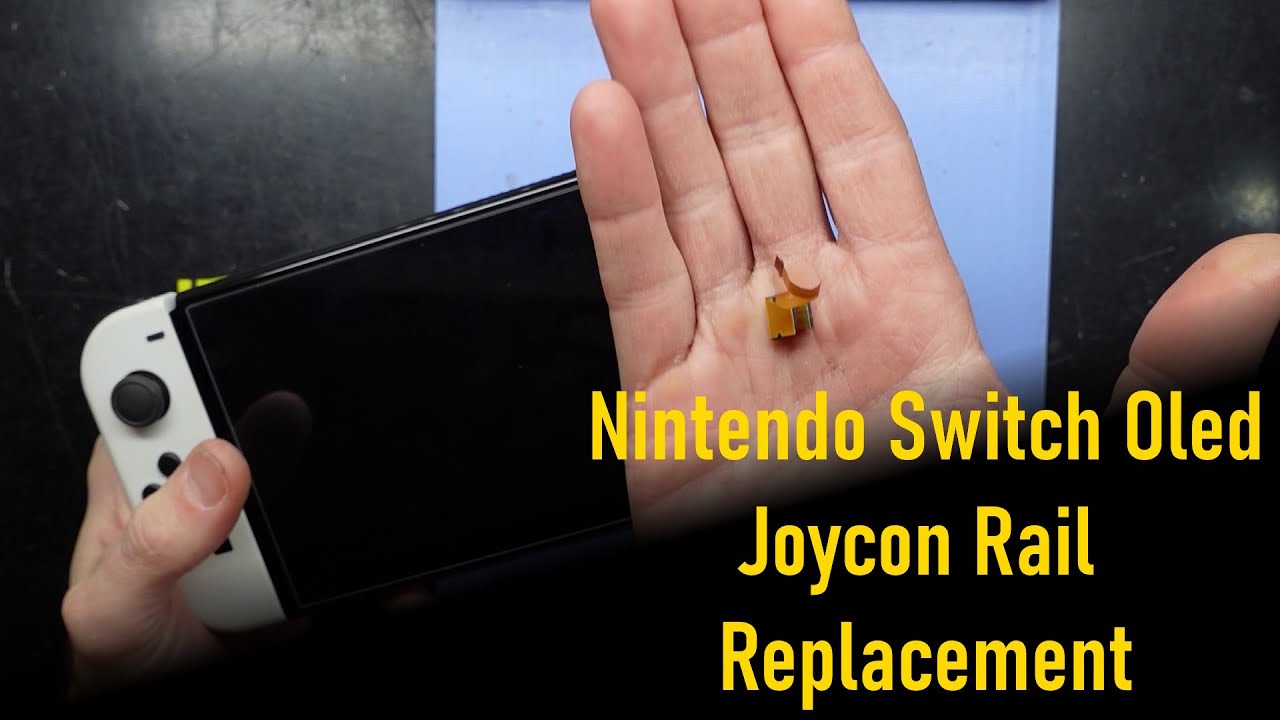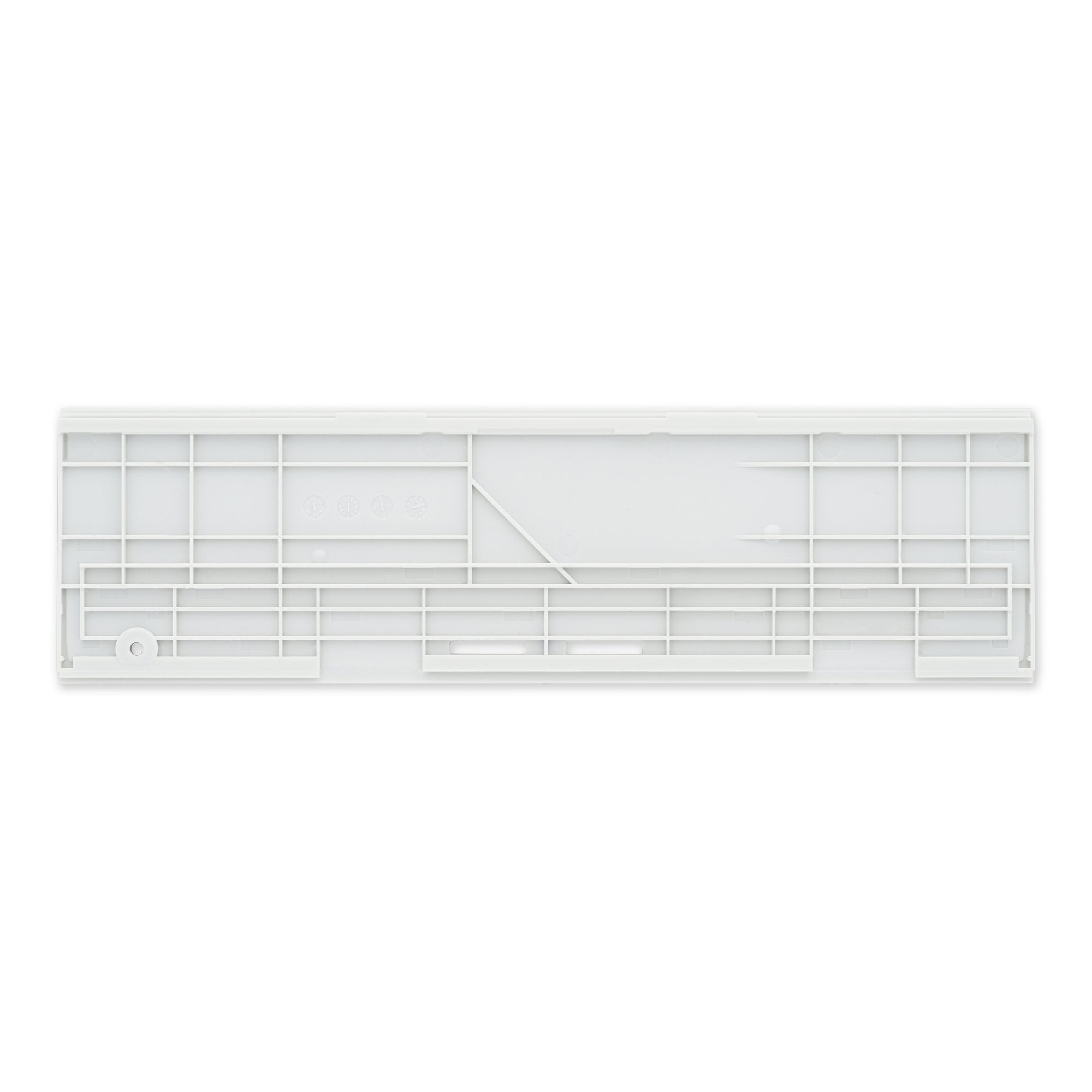Step-by-Step Nintendo Switch OLED Motherboard Replacement Guide
Duration: 45 minutes
Steps: 46 Steps
To keep things safe and sound, drain your battery to below 25% before diving into your Switch disassembly.
Get ready to breathe new life into your Nintendo Switch OLED by replacing the motherboard. For a safe and smooth repair, make sure your battery is below 25% before you start. This reduces the risk of any accidents. If your battery is swollen, be sure to take the necessary precautions. You’ll be using JIS screws, but don’t worry if you only have a Phillips screwdriver – it’ll do in a pinch. Just be gentle to avoid stripping those screws. When you remove the shield plate, don’t forget to refresh the thermal compound between the plate and the heatsink. You’ll need a special kind of thermal paste, like K5 Pro, that can handle the job. Later, when you’re replacing the heat sink, you can switch to regular thermal paste. Now, let’s get started!
Step 1
Alright, before diving in, make sure your device is completely powered down. Trust us, it’s a vibe.
– Hold down the small round button on the back of your Joy Con controller—don’t let go just yet!
– As you keep that button pressed, slide the controller upward like you’re unlocking its secret ninja mode. Smooth and steady wins the race!
Step 2
Give that same process a whirl with the other Joy Con! You’ve got this!
– Keep sliding that Joy Con up until it pops right off the console, just like a pro!
Step 3
To keep those pesky screws from getting stripped, press down firmly, take your time, and if they’re being stubborn, give a different JIS or Phillips driver a shot!
– Grab your trusty Phillips or JIS driver and get ready to tackle that 2 mm-long screw holding the top of the rear case to the frame. You’ve got this!
Step 4
– Grab your trusty Phillips driver and let’s tackle those two 2 mm-long screws at the bottom of the rear case. Unscrew them with care, and you’ll be one step closer to your repair adventure!
Step 5
To avoid stripping those super tight screws, apply some firm downward pressure, take your time, and if they still won’t budge, try swapping to another JIS 000 or PH 000 driver – it’s all about finding the right fit!
– Grab your trusty Phillips driver and let’s tackle that 3.8 mm screw holding the right Joy-Con sensor rail snugly to the rear case. You’ve got this!
Step 6
– Grab your trusty Phillips driver and unscrew that 3.8 mm bad boy holding the left Joy-Con sensor rail to the rear case. Easy peasy, right?
Step 7
Got a microSD card hanging out in the slot? Go ahead and pop that out now before we dive into the next step!
– Gently pop the kickstand up with your finger to prop up the back of your device.
Step 8
– Grab your Y00 screwdriver, and twist out those two 4.3 mm screws holding the rear case to the frame. You’ve got this—let’s keep it rolling!
Step 9
Stuck on getting that case off? Grab an opening pick and gently nudge those plastic clips free like a pro.
– Time to get started! Carefully lift the rear case up from the top of the device and gently remove it.
Step 10
– Gently glide the flat end of a spudger to peel back a corner of the tape from the shield plate. You’ve got this!
Tools Used
Step 11
– Grab some tweezers, or just use your fingers, and carefully peel back that tape. It’s time to say goodbye to it for now!
– Keep the tape safe and sound in a clean spot, so it’s ready to be reused when the time comes.
Tools Used
Step 12
– Grab some tweezers or just use your fingers to lift and disconnect the primary Wi-Fi antenna’s coaxial cable.
– When putting things back together, these can be a bit tricky. Take your time and do it one connector at a time: hold each connector in place over its socket and press down with the flat end of a spudger. You’ll hear a satisfying snap when it clicks into place.
Step 13
– Gently coax the primary antenna’s coaxial cable out of its snug little slots in the shield plate using tweezers or your fingers. You’re doing great!
Tools Used
Step 14
– Grab your trusty Phillips driver and unscrew the two 4.4 mm screws holding down the primary Wi-Fi antenna to the shield plate. Easy peasy!
Step 15
– Slide an opening pick into the gap between the main Wi-Fi antenna and the shield plate.
– Gently wiggle the pick to lift the primary Wi-Fi antenna away from the shield plate.
Step 16
– Time to take out the main Wi-Fi antenna. Let’s make some space for those new signals!
Step 17
– Grab those tweezers or just use your fingers to lift and unplug the secondary Wi-Fi antenna’s coaxial cable.
Tools Used
Step 18
– Gently use the tip of a spudger to guide the secondary Wi-Fi antenna’s coaxial cable out of its cozy little spot in the frame.
Tools Used
Step 19
– Grab your trusty Phillips driver and remove that 4.4 mm screw holding the secondary Wi-Fi antenna to the shield plate. Keep going, you’re doing great!
Step 20
Hold your horses on yanking that antenna out just yet! Its coaxial cable is still snugly tucked through the frame.
– Slide an opening pick between the secondary Wi-Fi antenna and the shield plate—like you’re slipping a note to your future self.
– Gently pry upward with the pick to pop the secondary Wi-Fi antenna free from the shield plate. Take it slow and steady—you’re the hero of this repair story!
Step 21
– Grab your spudger and gently guide the secondary Wi-Fi antenna’s coaxial cable out of its snug little slot in the frame.
– Carefully lift out the secondary Wi-Fi antenna and set it aside. Easy peasy!
Tools Used
Step 22
– Grab your trusty Phillips driver and get ready to tackle those six 4.4 mm screws holding the shield plate snugly to the frame. Let’s get this party started!
Step 23
You might notice a bit of pushback here—totally normal! The shield plate is snugly attached to the heat sink with thermal paste, so don’t worry, just keep a steady hand.
– Gently use your fingers to lift the top of the shield plate away from the frame—take it easy, you’re doing great!
– Carefully remove the shield plate. You’ve got this!
– There’s a thick pink thermal compound snugly filling the gap between the shield plate and the copper heat sink underneath. Whenever you take off the shield plate, be sure to consult our thermal paste guide to get rid of the old thermal compound and swap it out with a fresh, suitable option like K5 Pro during reassembly.
Step 24
– Gently use the tip of a spudger to pop off and disconnect the battery—just like opening a treasure chest, but way easier!
Tools Used
Step 25
– Grab some tweezers—or just your trusty fingers—and peel off that pesky piece of tape hiding the daughterboard’s screw. Easy breezy!
Tools Used
Step 26
– Grab your trusty Phillips driver and unscrew the 4 mm screw that’s keeping the daughterboard snug against the frame. Easy peasy!
Step 27
The underside of the daughterboard is snugly connected to the motherboard with a press connector. Keep it cool and steady as you work your magic!
– Slide a spudger gently between the daughterboard and motherboard like you’re cutting into a delicious cake—nice and easy.
– Give it a little pry with the spudger to pop the press connector free and separate the daughterboard from the frame—think of it as giving the components a little breathing room.
– Carefully lift out the daughterboard—bye-bye, little board!
– When putting press connectors back together, line them up carefully like you’re aiming for the perfect click. Press down on one side until it locks into place, then do the same on the other side. Avoid pressing the middle—it’s not a trampoline! Misalignment can bend pins and cause permanent damage, so take your time!
Tools Used
Step 28
– Grab your trusty Phillips driver and let’s tackle those three 3 mm screws holding the heat sink snugly to the motherboard. You’ve got this!
Step 29
You might feel a little pushback here—that’s just the heat sink holding on to the CPU with some thermal paste. Totally normal, so keep it steady and you’ll be good to go!
– Wedge a spudger gently between the heat sink bracket and the motherboard—like you’re opening a stubborn jar lid.
– Lever the spudger upward to free the heat sink from the motherboard. You’ve got this!
Tools Used
Step 30
– Slide a spudger into the little gap between the fan and the heat sink.
– Gently pry up with the spudger to break the bond of the heat sink from the adhesive below.
– Carefully lift off the heat sink.
– Grab some high-concentration (90% or higher) isopropyl alcohol and a microfiber cloth to wipe away the old thermal paste from both the heat sink and CPU. Don’t forget to apply a fresh layer of thermal paste to the CPU before putting everything back together!
Tools Used
Step 31
– Gently use the tip of a spudger, an opening tool, or even your trusty fingernail to lift up the tiny, hinged locking flap on the fan cable’s ZIF connector. Take it slow—precision is key!
Tools Used
Step 32
– Grab a trusty pair of tweezers and gently tug the fan cable straight out of its cozy connector on the motherboard. You’ve got this!
Tools Used
Step 33
– Grab your trusty Phillips driver and let’s get those three 3 mm screws outta there! These little guys are holding the fan tight to the frame, so give them a gentle twist and watch them come free.
Step 34
– Grab your trusty spudger and gently pop the fan straight up out of the frame—it’s like lifting the lid on a treasure chest!
– Now, carefully take the fan out and set it aside. Easy peasy!
Tools Used
Step 35
– Grab your trusty opening tool, spudger, or even your fingernail, and gently lift that little hinged locking flap on the power button board’s ZIF connector. You’ve got this!
Tools Used
Step 36
– Grab a trusty pair of tweezers and gently wiggle the power button board cable free from its cozy connector on the motherboard. You’ve got this!
Tools Used
Step 37
– Grab your trusty opening tool, spudger, or even your fingernail, and gently flip up the tiny, hinged locking flap on the ZIF connector for the right Joy-Con sensor rail. Easy does it!
Tools Used
Step 38
– Time to get a little delicate! Use a trusty pair of tweezers to carefully pull the right Joy-Con sensor rail’s cable straight out of its connector on the motherboard. Take your time and be gentle – we’ve got this!
Tools Used
Step 39
– Grab your trusty opening tool, a spudger, or even your fingernail, and gently lift the hinged locking flap on the display’s ZIF connector. You’ve got this!
Tools Used
Step 40
– Grab your trusty tweezers and gently pull the display cable straight out of its connector on the motherboard—easy peasy!
Tools Used
Step 41
– Grab a pair of blunt tweezers or use your fingers to gently unplug the left speaker’s JST connector from its socket.
Tools Used
Step 42
– Gently coax the right speaker’s JST connector out of its cozy socket using some blunt tweezers or your trusty fingers. You’ve got this!
Tools Used
Step 43
– Grab your favorite opening tool, trusty spudger, or even just your fingernail, and gently pop up the little hinged locking flap on the ZIF connector along the right Joy-Con sensor rail.
Tools Used
Step 44
– Grab a trusty pair of tweezers and gently pull the left Joy-Con sensor rail’s cable straight out of its connector on the motherboard. You’ve got this!
Tools Used
Step 45
– Grab your trusty Phillips driver and let’s tackle those five screws holding the midframe in place:
– Three 3 mm screws
– Two 4.4 mm screws
Step 46
– Reassembling your device? Just do these steps in reverse—simple as that!
– Double-check the new part against the old one. You might need to move some bits over or peel off adhesive before popping it in.
– Things not going as planned? Give troubleshooting a shot, or you can always schedule a repair.
– That’s it! Go rock that repair!
Tools Used
Success!
